Guides
How to Grow Plumeria Flowers: The Ultimate Guide for a Tropical Garden
Do you dream of adding a touch of tropical beauty to your garden? Plumeria flowers, known for their exquisite fragrance and vibrant colors, might be just what you’re looking for! These stunning plants thrive in warm climates and can be a showstopper in your garden with their stunning blooms and sweet aroma.
In this guide, I’ll walk you through everything you need to know about growing Plumeria flowers, from choosing the right Plumeria varieties to caring for them so they bloom beautifully. Whether you’re a seasoned gardener or a beginner, you’ll find helpful tips to ensure your Plumerias thrive in your garden.
What Makes Plumeria Flowers Perfect for Your Garden?
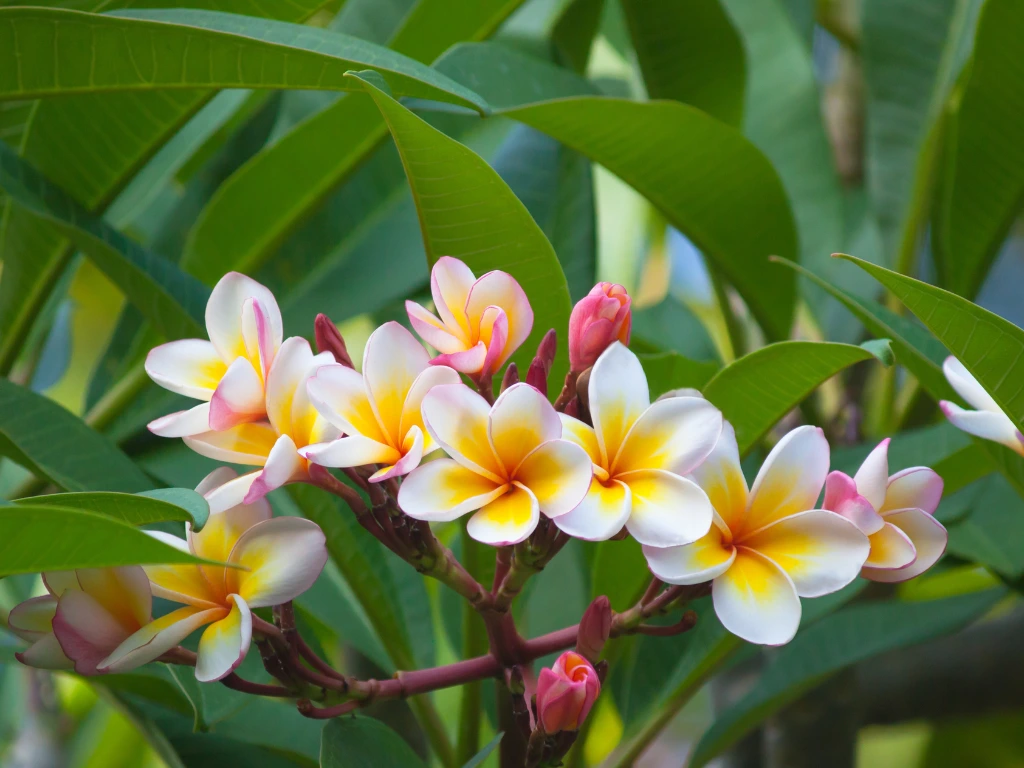
Plumeria flowers are the epitome of tropical beauty. With their vibrant hues, ranging from soft whites and yellows to bold reds and pinks, these flowers will add a vibrant splash of color to your garden. But it’s not just their beauty that makes Plumerias special; they are also incredibly fragrant. A few Plumeria blooms can fill your garden with a sweet, heady scent that’s perfect for warm summer evenings.
Plumerias are low-maintenance plants once established, which makes them a great option for gardeners looking to add something exotic without the need for constant attention. They thrive in warm climates and are perfect for gardens that get plenty of sunshine, especially in tropical and subtropical areas. And don’t forget, they also attract pollinators like bees and butterflies, which adds even more life and activity to your garden.
Understanding the Growing Conditions for Plumeria
Before planting your Plumerias, it’s important to understand their preferred growing conditions. These plants thrive in warm climates with plenty of sunlight. They need a lot of heat to flower and require well-drained soil to prevent root rot.
Plumeria plants need full sun to thrive, so it’s essential to find a sunny spot in your garden with at least 6 hours of direct sunlight each day. They also appreciate a warm environment, making them ideal for tropical and subtropical regions.
Planting Plumeria Flowers
Choose the Right Variety
There are many varieties of Plumeria, and each has its unique characteristics. Some varieties are better suited to certain climates, while others might have different colors and growth habits. Here are a couple of popular varieties to consider:
-
Plumeria rubra: This variety produces vibrant flowers in shades of pink, yellow, and red. It’s one of the most common Plumeria types grown in gardens.
-
Plumeria pudica: Known for its white, fragrant blooms and more compact size, this variety is perfect if you have limited space.
When selecting your Plumeria, make sure to choose a variety that fits your climate zone and garden conditions. Some varieties may be more suited to cooler temperatures, while others are more adaptable to heat and humidity.
Ideal Planting Conditions
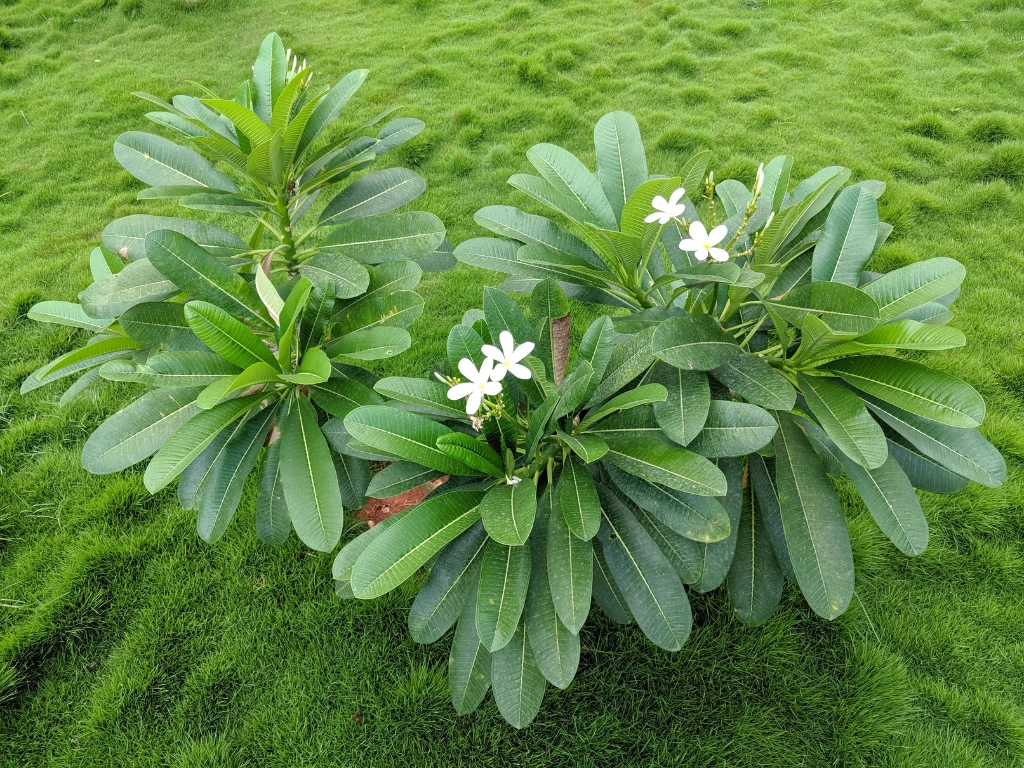
Plumeria flowers prefer well-drained, slightly acidic soil. Follow these tips for preparing the soil:
-
Soil: If your soil is heavy or clay-like, improve drainage by mixing in some sand or organic compost.
-
Watering: Plumerias are drought-tolerant once established but need consistent watering during the first year. Ensure that the soil is kept slightly moist but not waterlogged.
-
Temperature: These plants thrive in warm temperatures, ideally between 65°F and 85°F (18°C to 29°C). If you live in a colder climate, you may need to bring your Plumeria inside during the winter months.
When to Plant
The best time to plant Plumeria is during the spring or early summer when temperatures are warm and there’s little chance of frost. This gives the plant plenty of time to establish its roots before the colder months arrive.
Step-by-Step Planting Guide
-
Dig the Hole: The hole should be at least twice the size of the root ball.
-
Place the Plant: Gently remove the Plumeria from its pot and place it in the hole. Make sure the top of the root ball is level with the surrounding soil.
-
Backfill with Soil: Fill the hole with the prepared soil and gently press down to eliminate any air pockets.
-
Water Thoroughly: After planting, water the area generously to settle the soil around the roots.
Caring for Plumeria Flowers
Watering and Fertilizing
Plumeria plants need regular watering during their first year to establish a healthy root system. Once established, they are drought-tolerant and can be watered less frequently. However, they do appreciate deep watering during dry spells.
-
Fertilizing: Use a balanced, slow-release fertilizer during the growing season (spring and summer). Be careful not to over-fertilize, as this can damage the plant. A fertilizer with a higher phosphorus content will encourage more blooms.
Pruning
Pruning is important for maintaining the shape of your Plumeria and encouraging new growth. Here’s how to prune your plant:
-
When to Prune: Prune in the late fall or early spring before the growing season begins.
-
What to Cut: Remove any dead or damaged branches, and trim back any overly long or leggy growth.
Overwintering Plumerias
In colder climates, Plumeria plants need protection from frost. If you’re growing them in containers, you can easily move them inside during the winter months. If you have Plumeria planted in the ground, cover them with a frost cloth or move it to a more sheltered location during extreme cold spells.
How to Encourage Plumeria More Blooms
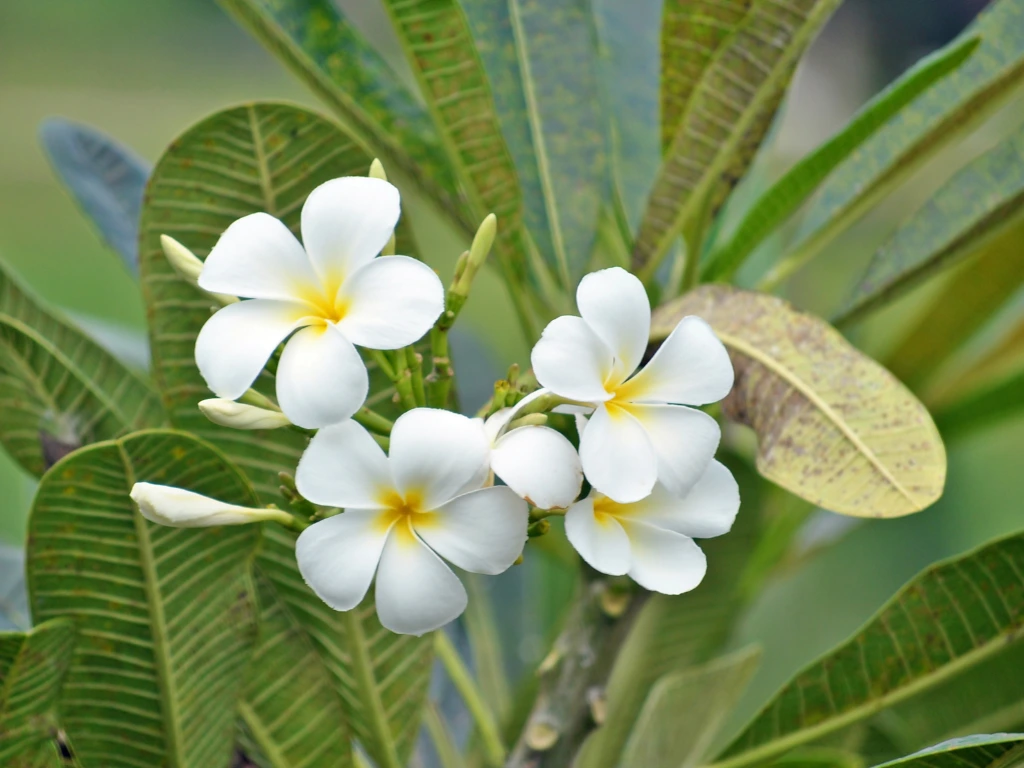
Plumerias are known for their stunning, fragrant blooms. To ensure you get the most vibrant flowers, follow these tips:
-
Provide Plenty of Sun: Ensure your Plumeria gets at least 6 hours of direct sunlight daily.
-
Avoid Overwatering: Plumerias don’t like to sit in water, so make sure the soil drains well to avoid root rot.
-
Maintain Healthy Soil: Keep the soil slightly acidic and well-drained for optimal growth and flowering.
What Do Plumeria Flowers Look Like?
Plumeria flowers are beautiful and fragrant, with colors ranging from pure white to vibrant yellows, pinks, reds, and even multicolors. Their star-shaped petals and sweet scent make them a favorite in tropical gardens. Whether planted in a sunny border, a container on your patio, or as a focal point in your garden, Plumerias will certainly stand out.
How to Get More Vibrant Blooms
To encourage more blooms, ensure that your Plumeria receives the right amount of sunlight and water, and consider fertilizing with a high-phosphorus fertilizer during the blooming season. Also, remember to prune your plant after it blooms to encourage new flower growth.
Common Problems and Solutions
While Plumerias are relatively easy to care for, they can sometimes face a few challenges:
-
Pests: Aphids and mealybugs can sometimes infest Plumerias. If you spot any pests, treat them with insecticidal soap or introduce natural predators like ladybugs to keep the population in check.
-
Diseases: Overwatering can lead to root rot or fungal infections like powdery mildew. To avoid these, ensure proper drainage and avoid overhead watering, which can promote fungal growth.
Frequently Asked Questions (FAQs)
Can Plumeria Survive in Cold Climates?
Plumeria is not frost-tolerant, so it’s best suited for warm climates. However, with proper care and protection, it can survive in colder areas if grown in containers and brought inside during the winter.
How Much Sunlight Do Plumerias Need to Thrive?
Plumerias need full sun for at least 6 hours a day to thrive and bloom.
Where is Plumeria Native To?
Plumeria, also known as frangipani, is native to tropical regions of the Americas, particularly the Caribbean, Central America, and Mexico. It also grows naturally in some parts of Southeast Asia and the Pacific Islands. Its vibrant blooms and fragrance have made it a beloved flower in many tropical gardens around the world.
How Big Does Plumeria Get?
Plumeria plants can vary in size depending on the variety and growing conditions, but most varieties typically grow to be about 4 to 10 feet (1.2 to 3 meters) tall. Some varieties, particularly the dwarf types, may only grow to 3 to 4 feet (0.9 to 1.2 meters), while larger varieties can grow up to 12 feet (3.6 meters) or more. When grown in containers, Plumeria tends to stay smaller and more compact, but when planted in the ground, they can reach their full height and spread.
Are Plumeria Flowers Fragrant?
Yes! Plumeria flowers are famous for their sweet, tropical fragrance that can fill your garden with a beautiful scent.
How Long Do Plumeria Blooms Last?
Plumeria blooms typically last for several weeks to a couple of months, depending on the variety and environmental conditions. Some Plumeria varieties can bloom from spring to early summer, and with the right care, you may even have blossoms appearing in later months. However, each individual flower lasts around 5 to 7 days, but new flowers will continue to bloom throughout the season.
Final Thoughts
Plumeria flowers are a beautiful addition to any garden, offering not only vibrant blooms but also a lovely fragrance. By following the planting and care tips above, you can ensure your Plumerias grow strong and healthy, providing years of enjoyment. So why not add these tropical beauties to your garden and enjoy the rewards of your hard work? Happy gardening!
Related Posts:
- How to Grow California Lilacs: The Ultimate Shade Garden Guide
- Desert Rose Care: How to Grow Adenium Obesum Plants
- Persian Silk Tree: A Complete Guide to Growing, Caring for, and Understanding Albizia Julibrissin
- How to Grow and Care for White Angel Wing Begonia at Home
Related Collections for you!

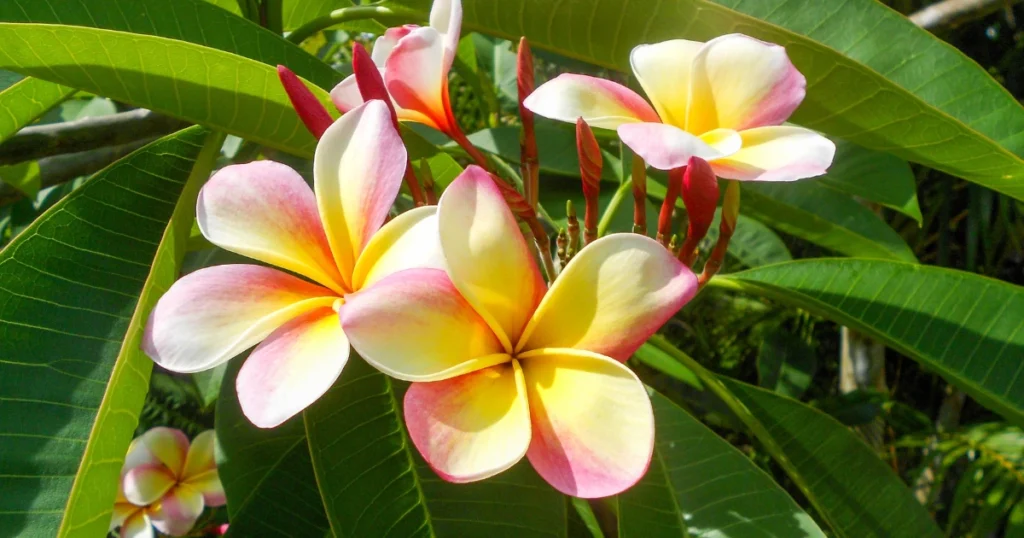
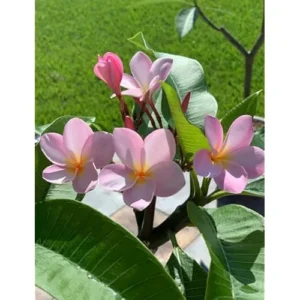
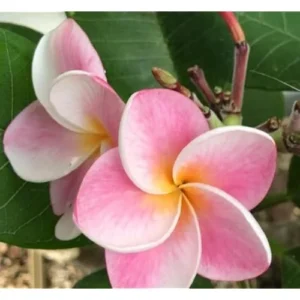
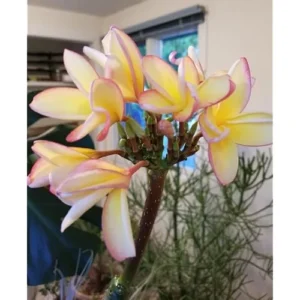
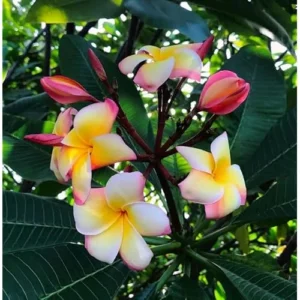
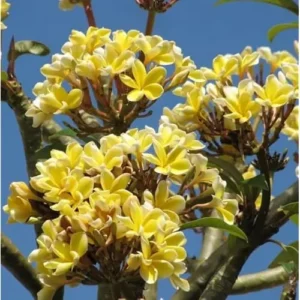
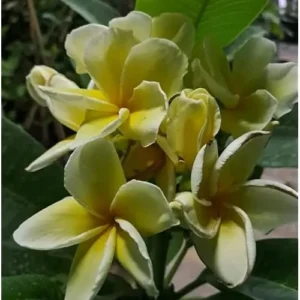
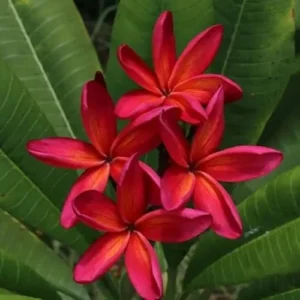
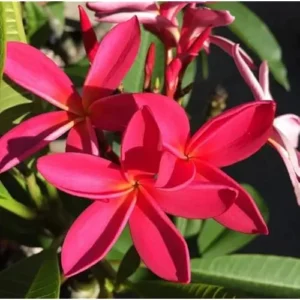

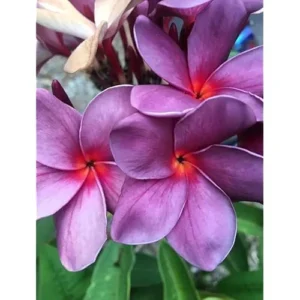
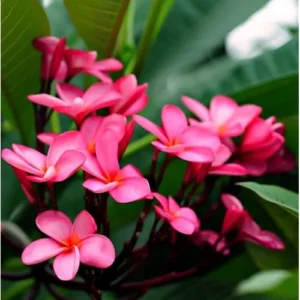

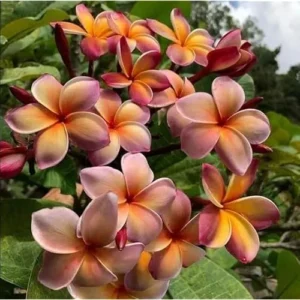
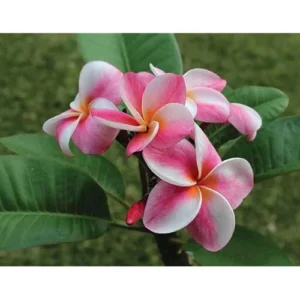
Swedish Ivy Care: How to Grow a Healthy, Thriving Plant
Have you ever looked at your Swedish Ivy and wondered why the leaves are turning [...]
Nov
Avoid These 10 Garlic Planting Mistakes for Bigger, Healthier Bulbs
Growing garlic at home is one of the most satisfying things a gardener can do [...]
Nov
How to Prevent Christmas Cactus Bud Drop: Tips for a Healthy Bloom
Have you ever noticed your beautiful Christmas cactus (Schlumbergera) starting to lose its buds just [...]
Nov
Discover 7 Stunning Types of Night-Blooming Cereus
Have you ever waited for a flower that only opens at night and then disappears [...]
Nov
How to Propagate Comfrey from Root Cuttings: Easy Guide for Beginners
If you’re looking to grow your own healthy comfrey plants without spending too much, propagating [...]
Nov
10 Best Christmas Plants to Gift This Holiday Season
The holiday season is finally upon us, and if you’re searching for the perfect gift [...]
Oct